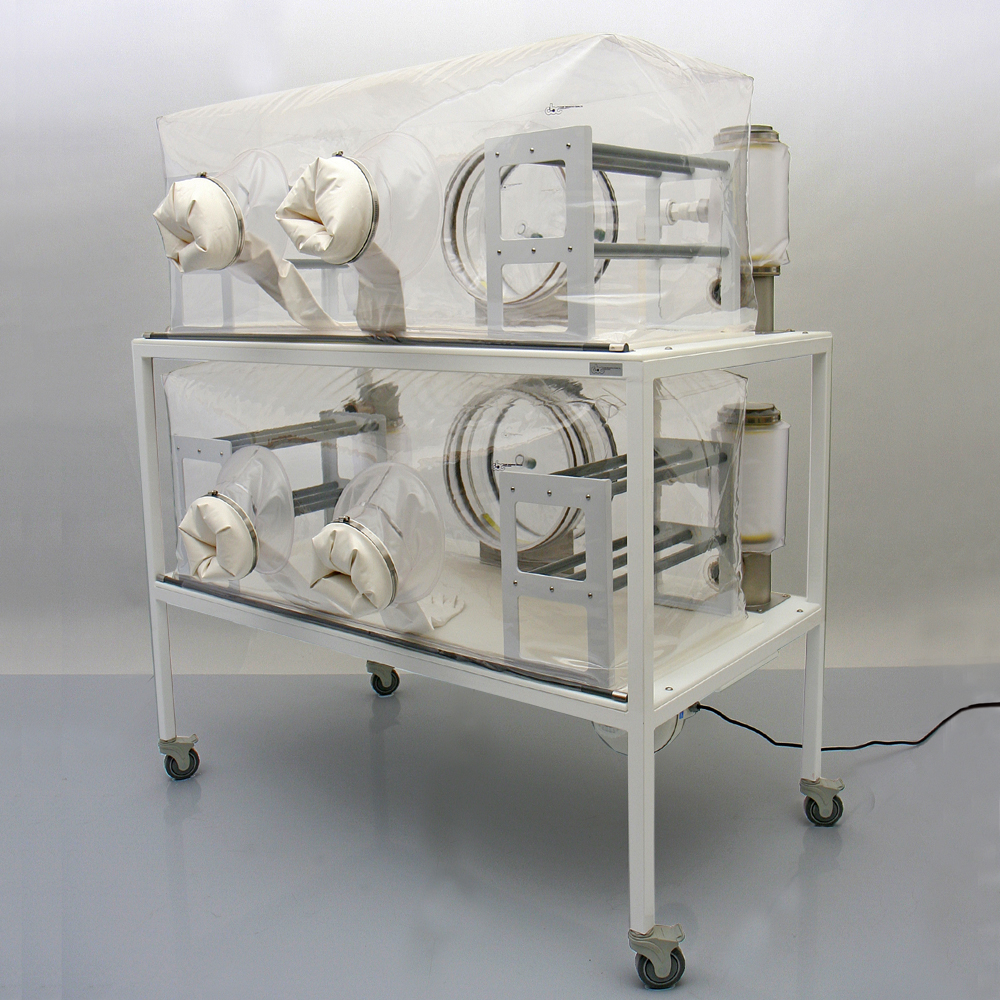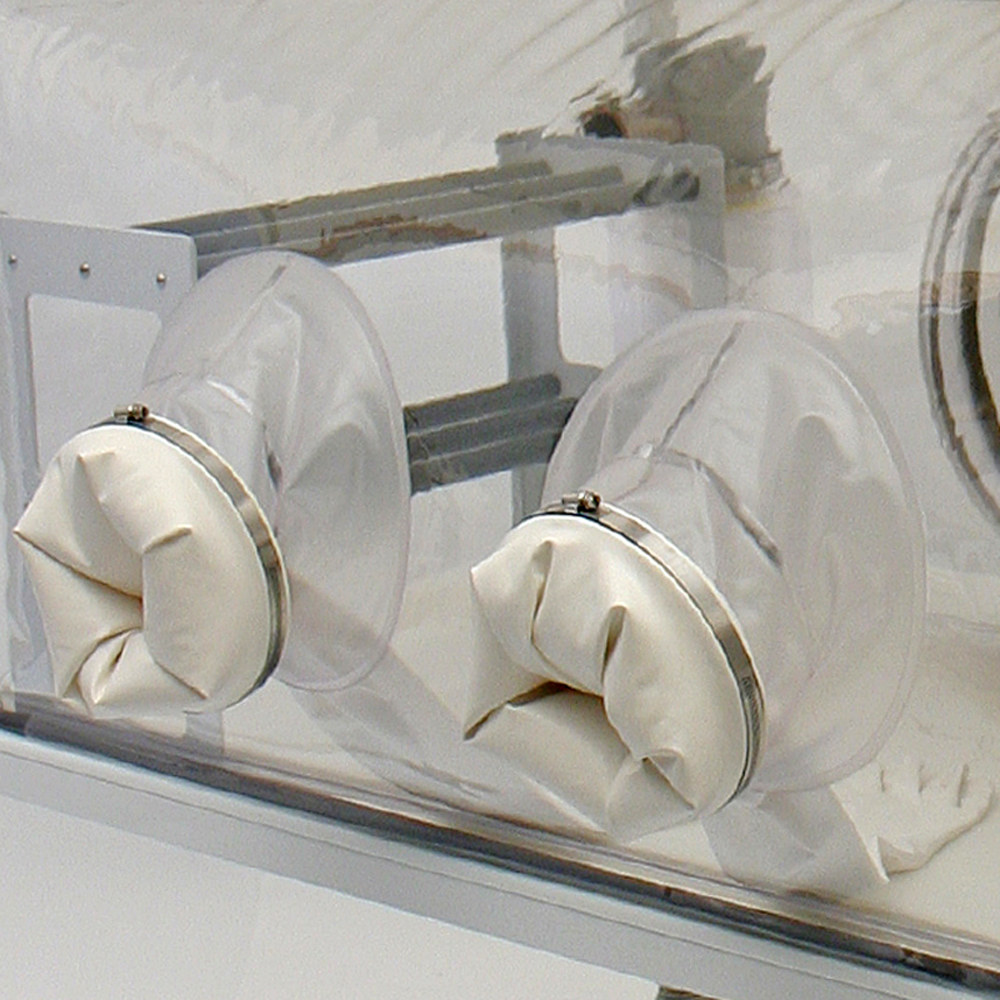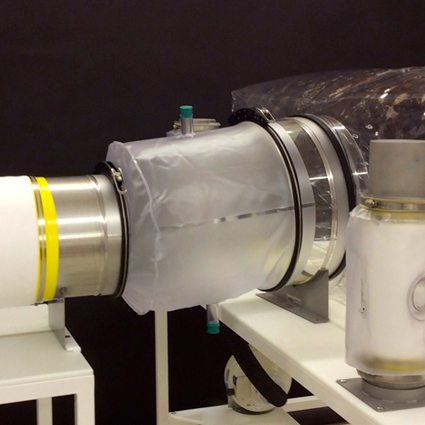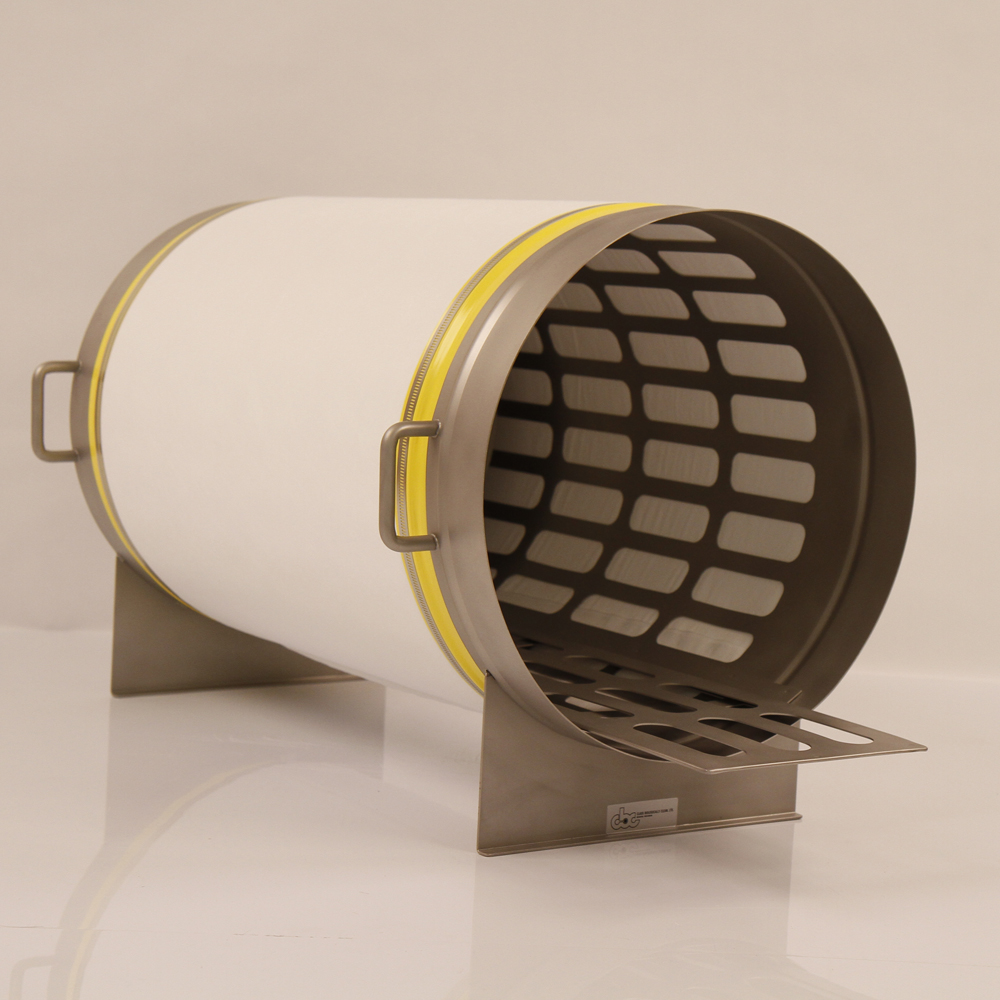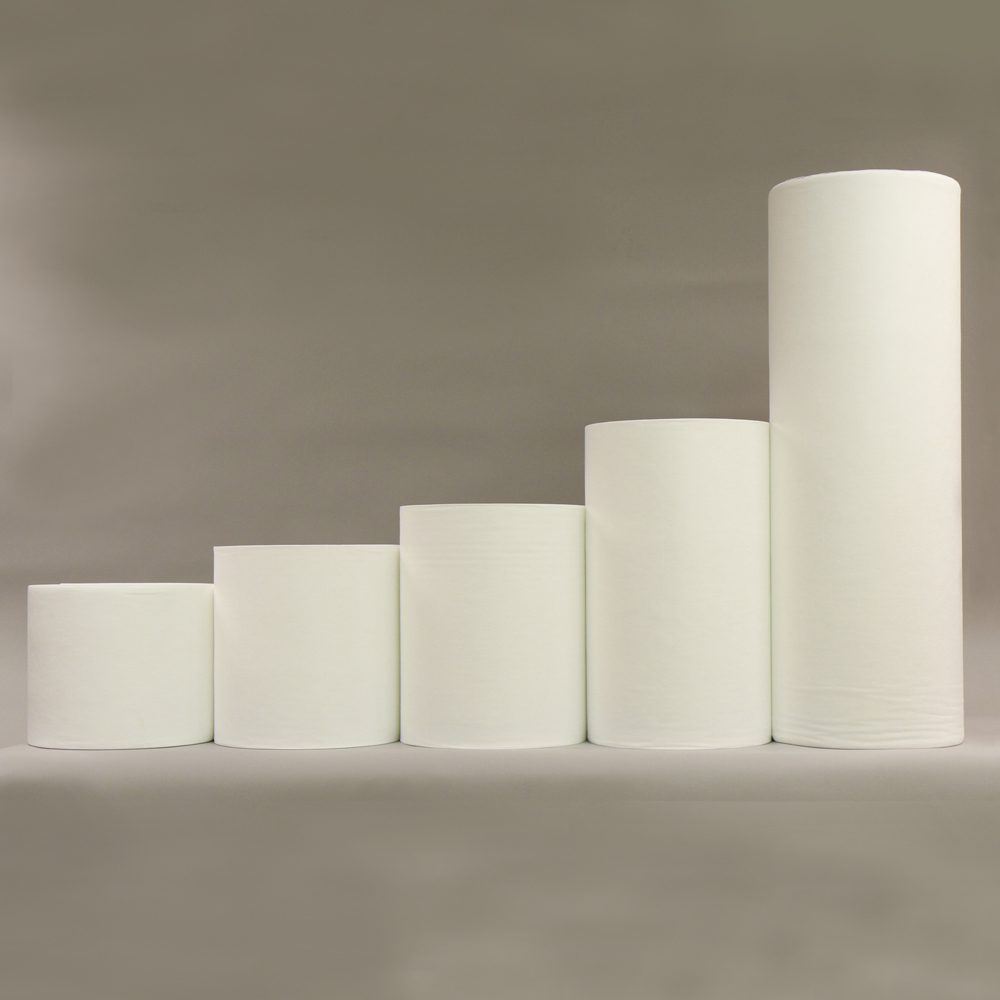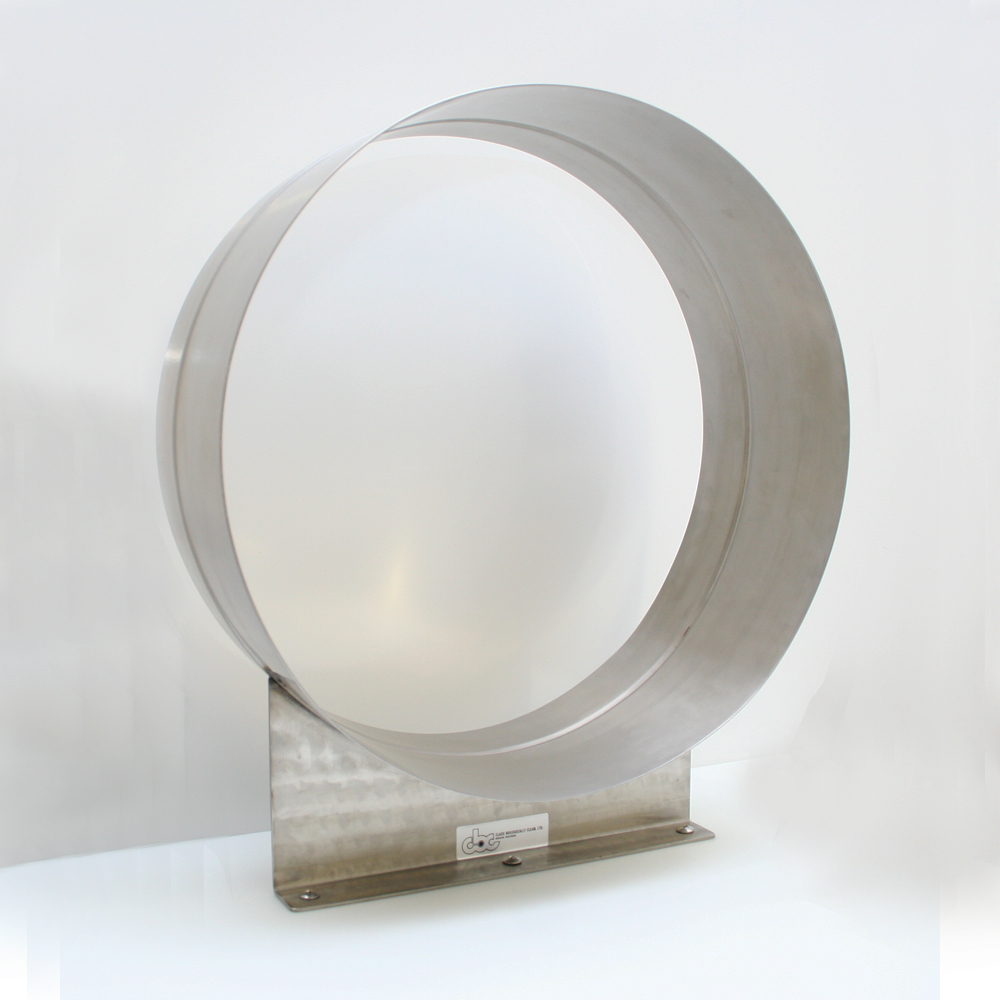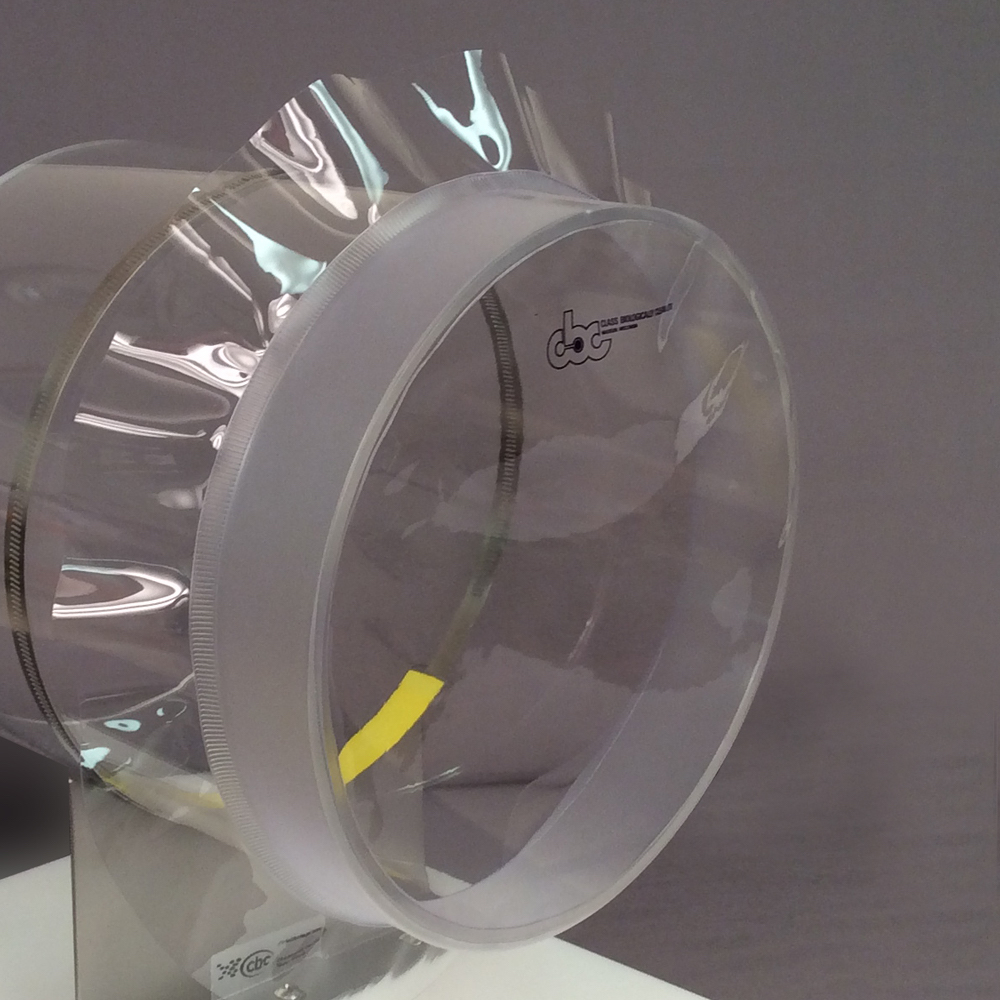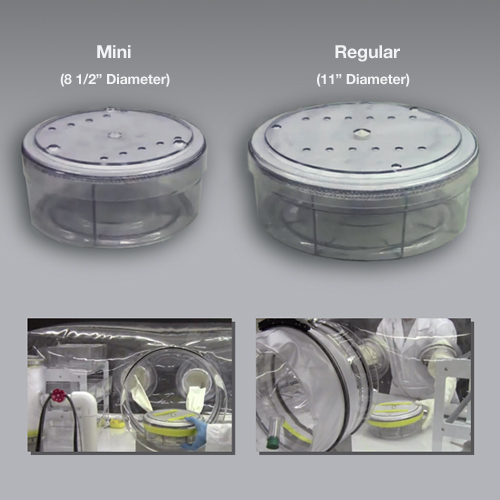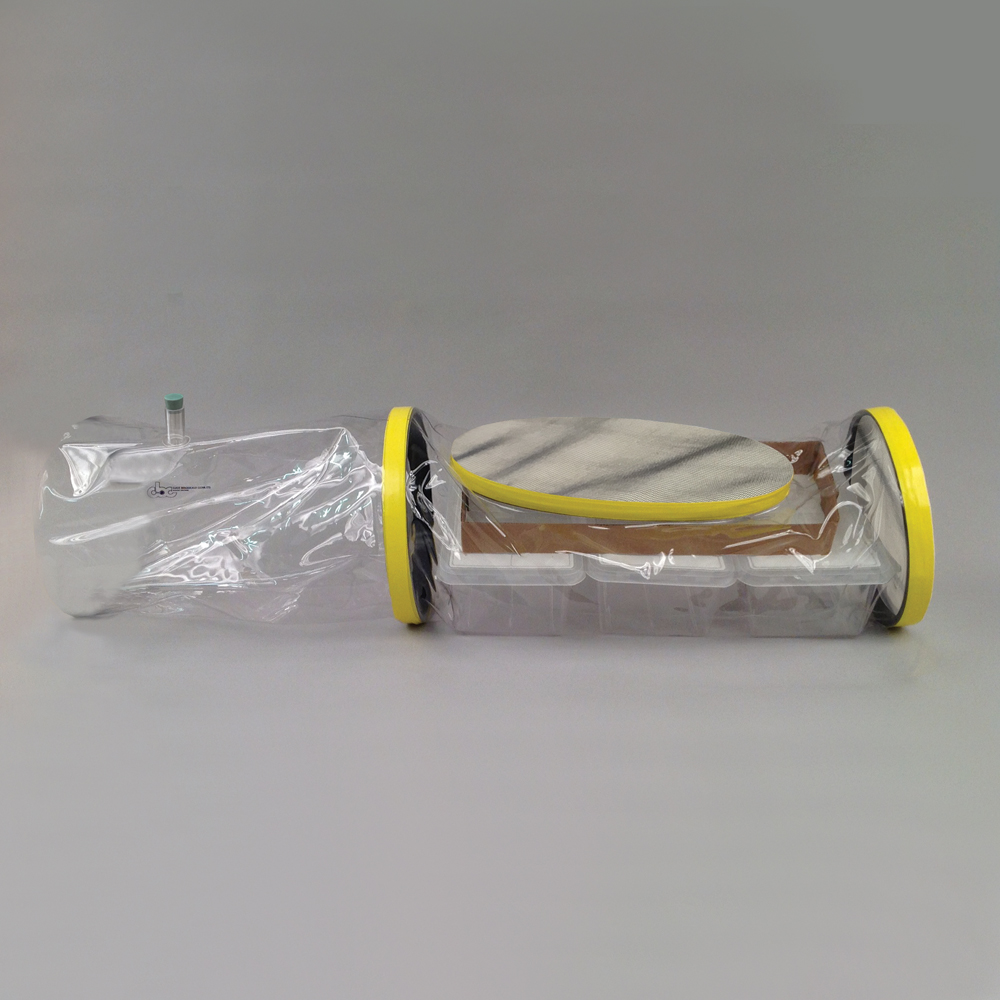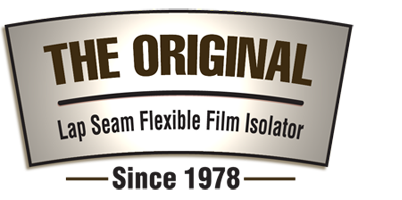Loading...
Designed to Offer Researchers Complete Environmental Control.
Flexible Film (Softwall) Isolators
Flexible Film Isolator Systems
CBC offers a variety of flexible softwall, germ free, barrier and containment isolator systems to meet your research or production requirements.
Flexible-Film, germ-free isolators and components for animal research including gnotobiotic, viral, microbiome and microbial studies! Includes, single-tier isolators, double-tier isolators, quad isolators, breeder isolators, pig tub isolators and specialty isolators like small "space saver" isolators and surgical isolators.
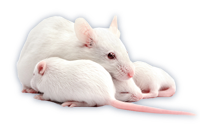
Flexible Film Isolators
Positive Pressure ● Negative Pressure
For gnotobiotic, microbiome, microbial, altered Schaedler flora and other research that requires a controlled environment. Double-Tier Isolators
Germ-Free Isolators Designed to Offer Researchers Complete Environmental Control.
Made in the United States
The CBC difference starts at the bottom and works its way up. Two-way locking casters keep the table frame from moving while working with the isolator. 1 1/2" powder coated steel frame provides superior strength and durability. The 1 1/2" steel frame prevents sagging keeping the isolator level, and the powder coating provide superior protection against chipping or rust. The tabletop is made of 1/2" high-density polyethylene with inserts preinstalled for all filters, port and hold-down loop clamps. Next comes the 3/8" closed cell foam pad that the isolator sits on. Each system come comes with a blower and manifold with ball valve for adjusting the airflow levels. Our standard 5" diameter filters provide greater airflow throughout the isolator. This increased airflow results in better living conditions for the animals inside the isolator. An acrylic transfer port with a stainless steel base provides strength and more light for easier transfers. Each isolator is made of either 20-mil vinyl or 20-mil urethane film. Each isolator includes the CBC Glove Extension. The glove extensions help reduce the stress on the isolator and user. The glove extensions also increase the reach into the isolator. Inside the isolator includes a durable 20 mil urethane pad and a two nine cage polypropylene cage racks.
CBC "Starter Labs"
 CBC "Starter labs" come with all the accessories and components required for researchers to establish a germ-free, gnotobiotic lab for viral, microbiome and microbial studies. They can be customized to meet a customer's individual research needs. Below are links to our standard "Starter Lab" packages to better give you an idea what is usually included in the packages.
CBC "Starter labs" come with all the accessories and components required for researchers to establish a germ-free, gnotobiotic lab for viral, microbiome and microbial studies. They can be customized to meet a customer's individual research needs. Below are links to our standard "Starter Lab" packages to better give you an idea what is usually included in the packages.
Single-Tier Starter Labs Double-Tier Starter Labs
Quad Isolator Starter Labs Space Saver Starter Labs
Positive or Negative Pressure Isolator Units
CBC flexible, softwall isolators provide the maximum in both product and personnel protection.
Positive Pressure Isolators: Product protection is provided using positive pressure isolators. Positive pressure isolators create pressurized chambers in which the air pressure inside the chamber is greater than the ambient room pressure. In the event of a breach, the air inside the isolator will be pushed out keeping contaminants out of the isolator, hence protecting the product inside the unit.
Negative Pressure Isolators: Personnel protection and product containment is provided using negative pressure isolators. With negative pressure isolators the air is pulled out of the isolator, which creates a lower pressure inside the chamber than the ambient room pressure. An external frame is needed to prevent the chamber from collapsing. In the event of a breach, the surrounding room air is pulled into the isolator preventing any product inside the isolator from leaving the isolator (often called a containment isolator).
Standard (Positive Pressure) System Sizes:
- 30" x 2' x 2' – Single-Tier/One isolator.
- 30" x 2' x 2' – Single-Tier/Two isolators.
- 30" x 2' x 2' – Double-Tier/Two isolators.
- 30" x 2' x 2' – Quad/Double-Tier/Four isolators.
- 3' x 2' x 2' – Single-Tier/One isolator.
- 3' x 2' x 2' – Double-Tier/Two isolators.
- 4' x 2' x 2' – Single-Tier/One isolator.
- 4' x 2' x 2' – Double-Tier/Two isolators.
- 60" W x 30" H x 27" D – EU-Single-Tier/One isolator.
- 60" W x 30" H x 27" D – EU-Double-Tier/Two isolators.
- 5' x 2' x 2' – Single-Tier/One isolator.
- 5' x 2' x 2' – Double-Tier/Two isolators.
- 6' x 2' x 2' – Single-Tier/One isolator.
- 6' x 2' x 2' – Double-Tier/Two isolators.
- Note: All of the above system sizes are also available as negative pressure systems.
CBC' Quality Control Tracking
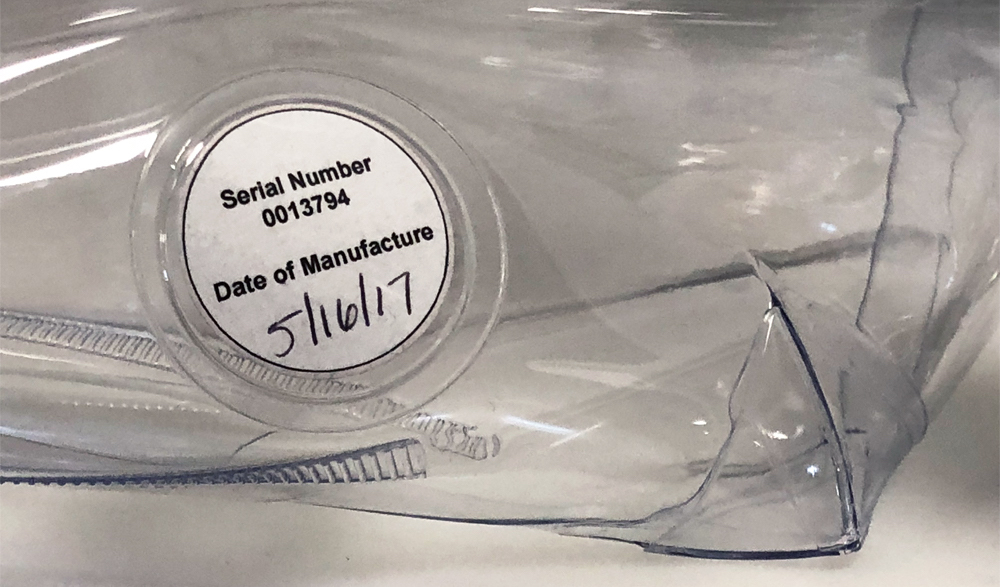
When you buy one of our gnotobiotic isolator systems or just a canopy, your canopy will be marked with its own unique serial number and manufacture date. Should you ever have a issue with the canopy (or need a replacement) CBC can trace your canopy back to the exact specs previously ordered. The same for replacement canopies for existing frames and filter systems.
- Traceability.
- Faster replacement.
- More accurate replacement.
Each CBC Flexible Film Canopy is Marked With its Own Unique Serial Number and Manufacture Date to Ensure Traceability and Better Customer Support.
CBC Glove Port Glove Extensions for Better Worker Dexterity and Less Stress on Isolator
CBC glove extensions (optional) provide better worker dexterity and help reduce stress on isolators at a critical seam areas. Read more
The CBC Difference
The CBC difference includes our original lap-seam sealing process and the use of 20 mil. polyurethane material that is almost indestructible and helps ensure against contamination due to accidental puncture or tear.
CBC uses a highly durable "lap seam" seal for the majority of our seams, and an even superior "cut/weld/strip seam" seal for high risk areas. Because your reputation, research or production should not risk being compromised! (See, "Pull Test" and "Puncture Demonstration" videos below.)
The CBC Lap-Seal Seam "Pull" Test
Single Seam Seal vs. CBC Lap Seal Seam Read more
Because your reputation, research or production should not risk being compromised!
20 mil. Polyurethane Puncture Demonstration
CBC's 20 mil. polyurethane material is almost indestructible and helps ensure against contamination due to accidental puncture or tear. Read more
Because your reputation, research or production should not risk being compromised!
Improved Living Environment
CBC's lower filter inlet port and upper filter outlet port can more efficiently remove warm, moist air. What's more, our 5" diameter design (vs. competitive 3" diameter) provides greater airflow. The larger filter diameter combined with CBC's unique "inlet/outlet" port design help improve the isolator's living environment.
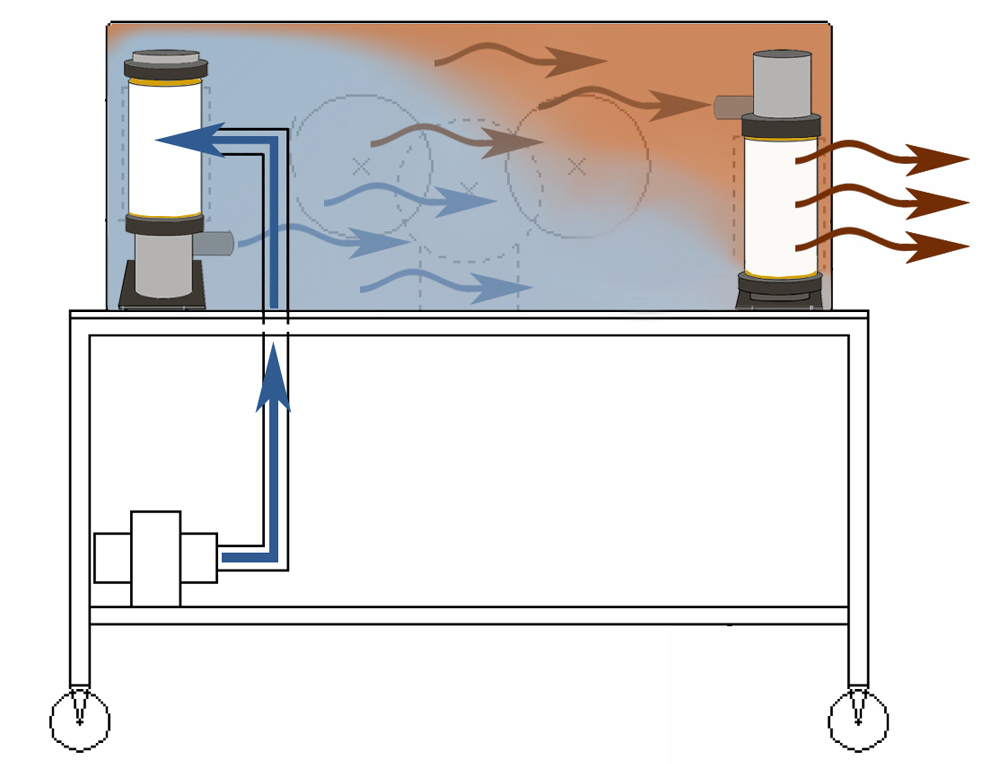
Flexible Film Isolators:
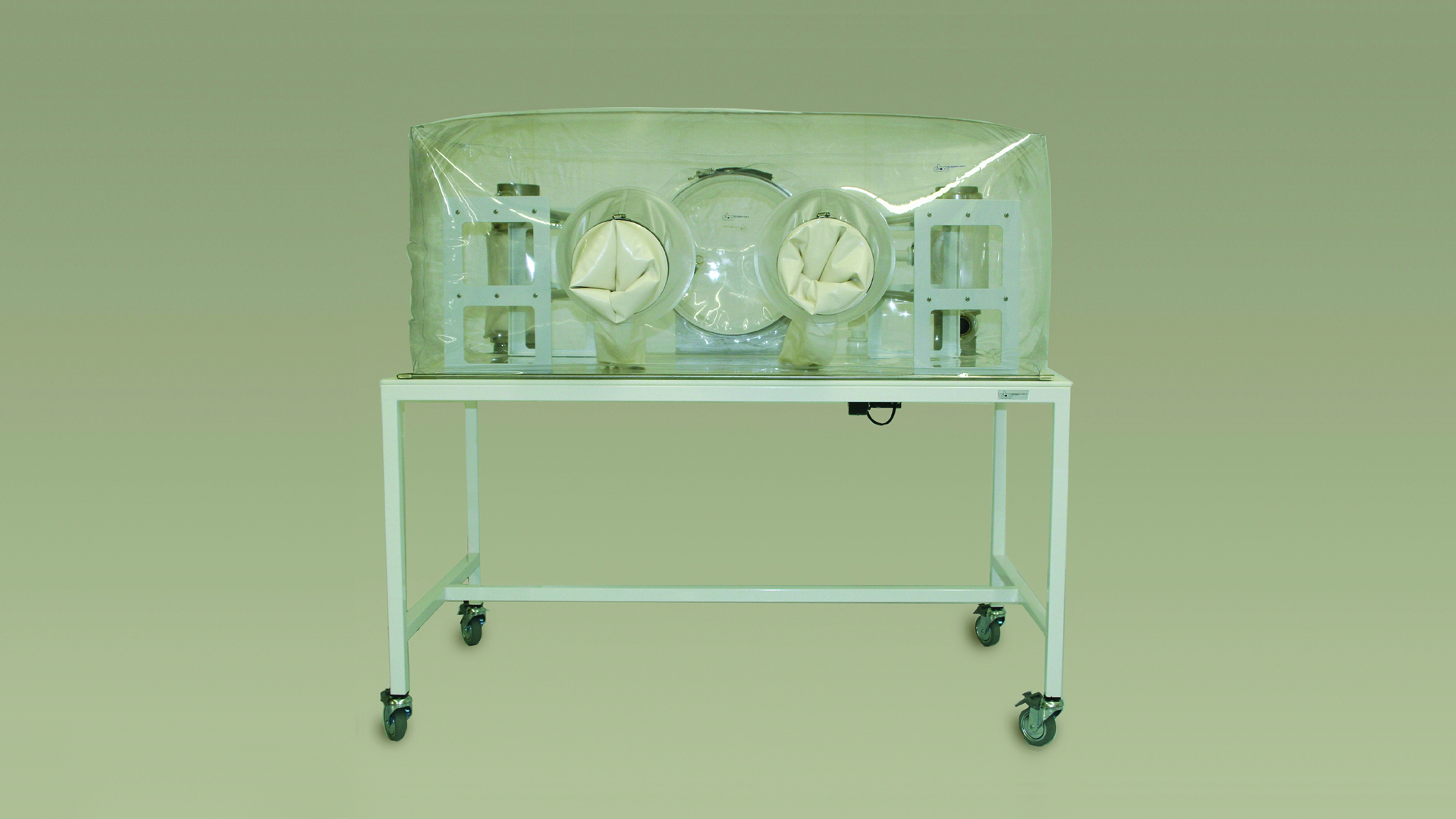
Single-tier Isolators
A germ-free, gnotobiotic, flexible film isolator system with all of the hardware and components necessary for assembly. Read more
Positive Pressure or Negative Pressure
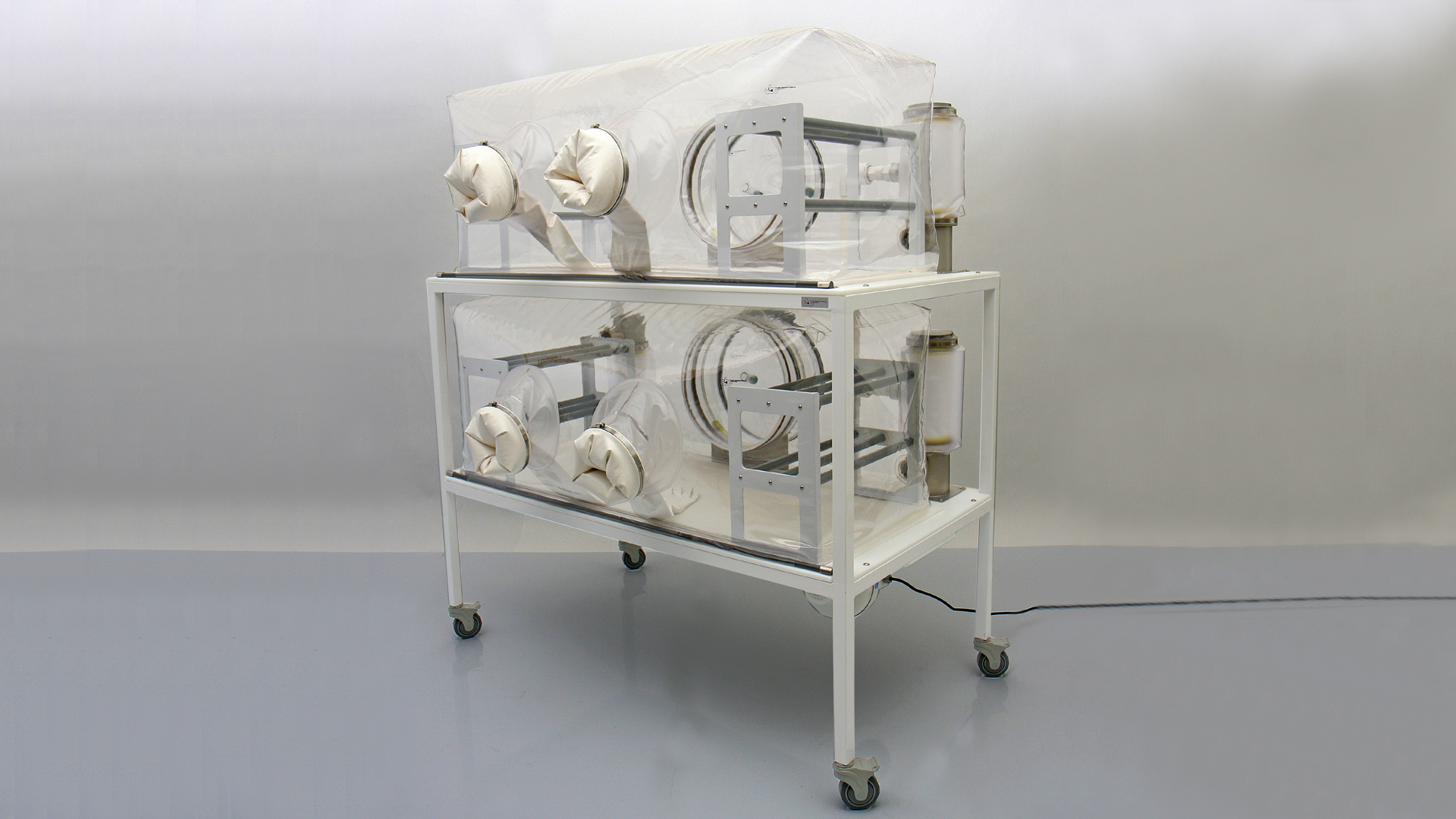
Double-Tier Isolators
A germ-free, gnotobiotic, flexible film isolator system with all of the hardware and components necessary for assembly. Read more
Positive Pressure or Negative Pressure
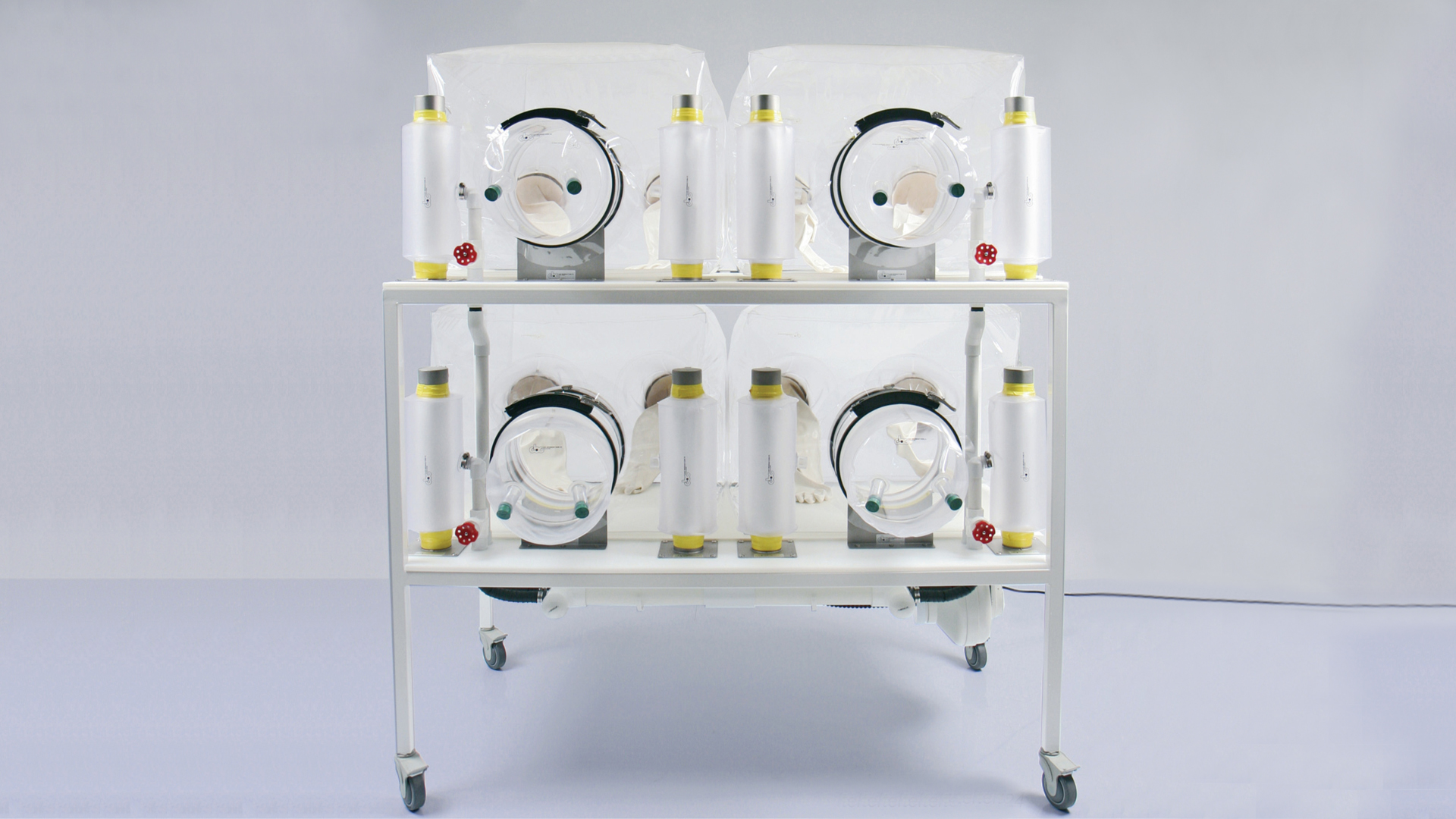
Quad Isolator
Four (4) independent isolators in one footprint allows you to conduct four different experiments at one time. . Read more
Positive Pressure or Negative Pressure
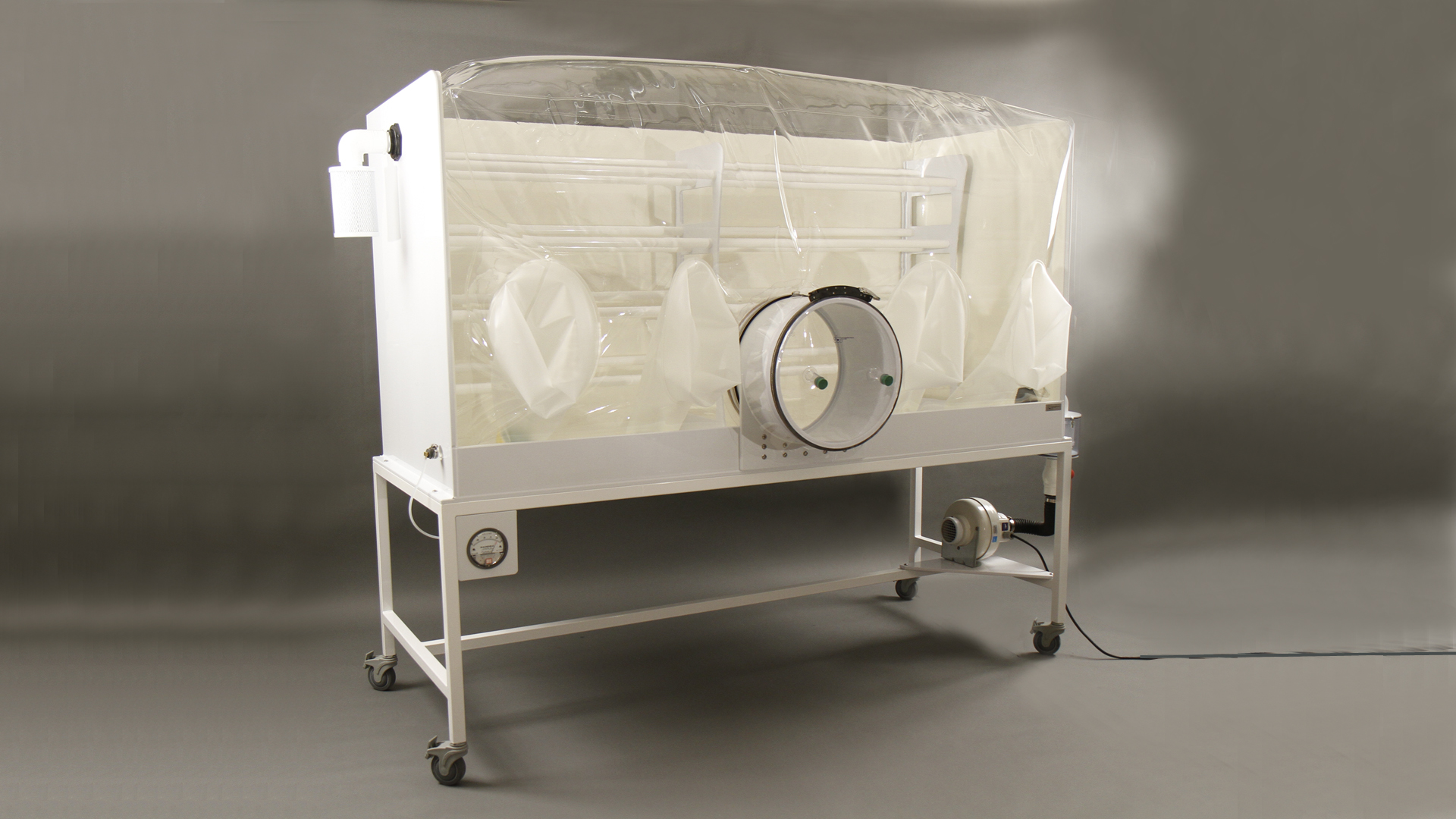
Breeder Isolator
Breed your own colony of germ-free rodents with CBC's germ-free, flexible film, breeder isolator with polypropylene holding box. Read more
32- or 50-cage Isolators
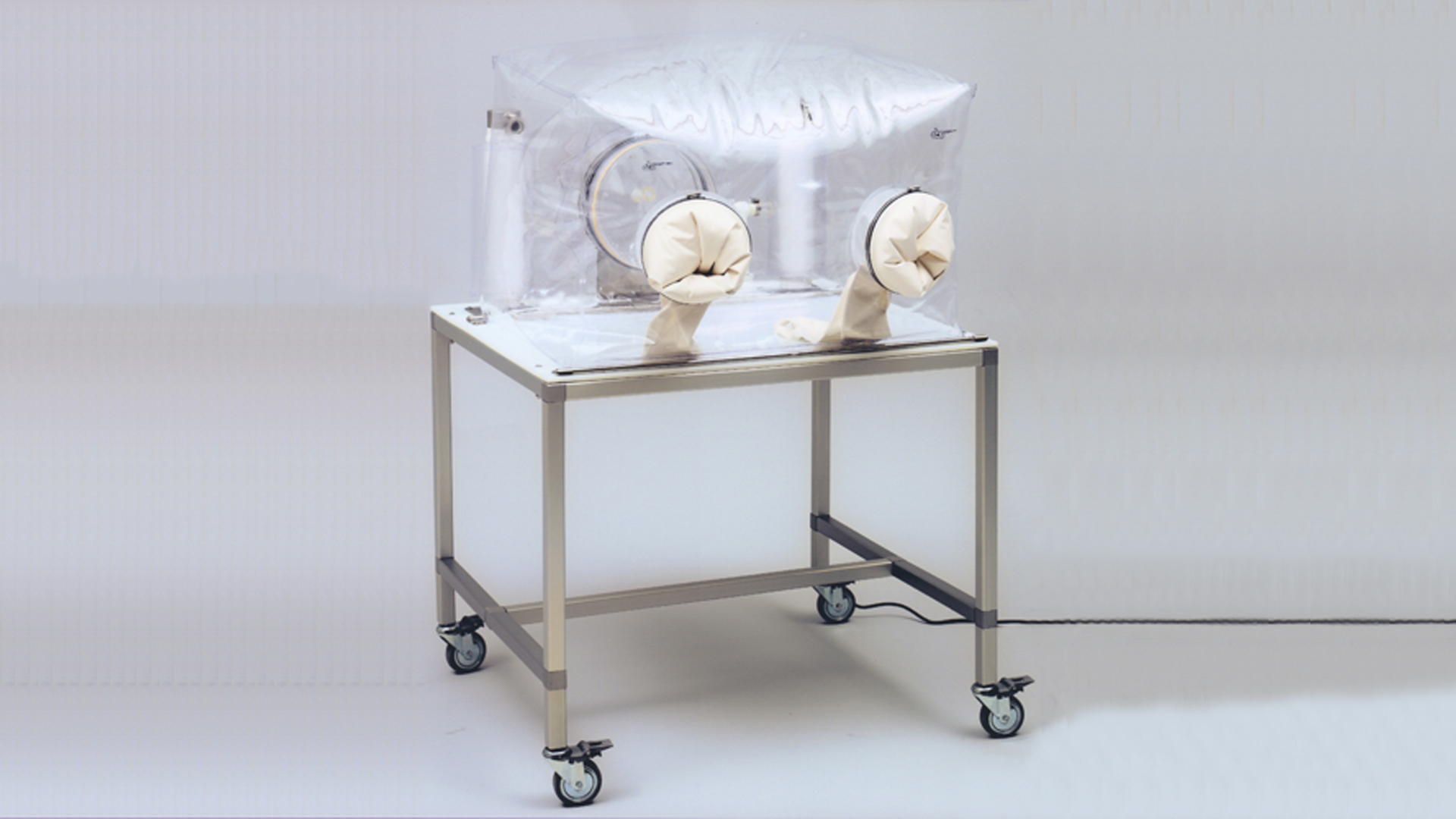
Small "Space Saver" Isolators
Ideal for labs with limited space and for use as lab transport or animal quarantine. Avoid putting the health and well-being of their research animals in jeopardy when adding new animals to the colony. Read more
Compact sizes are durable and economical
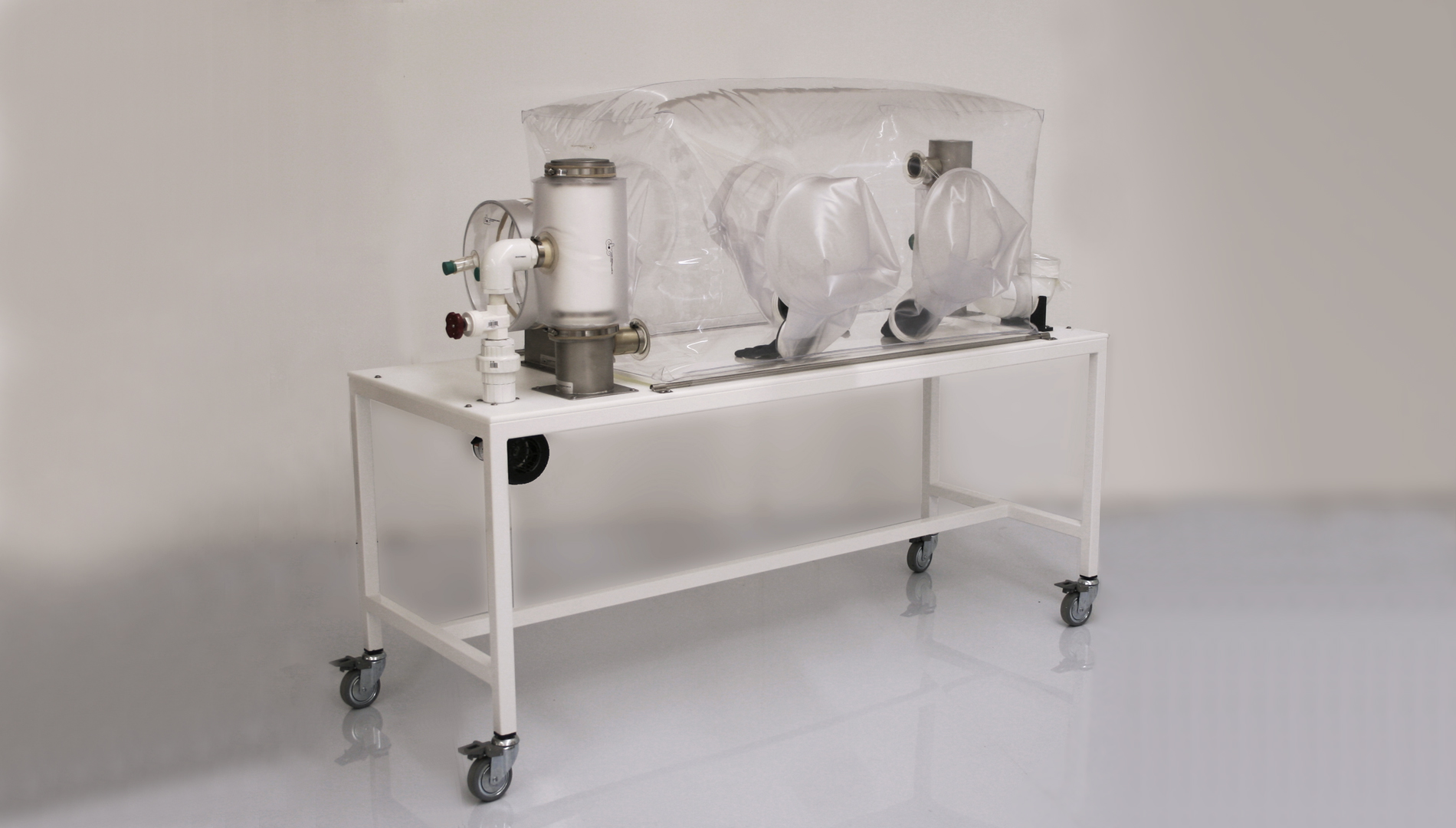
Surgical Isolator
Positive pressure, flexible film, germ-free surgical isolator systems (optional microscope attachment and dip tube available). Read more
4' x 2' x 2' – Custom Sizes
Germfree Shipper Sleeve
These Germfree Shipper Sleeves are designed to safeguard the health status of germ-free, gnotobiotic mice and rats during shipping. Wire mesh protects filter media, stronger packaging and more. Read more
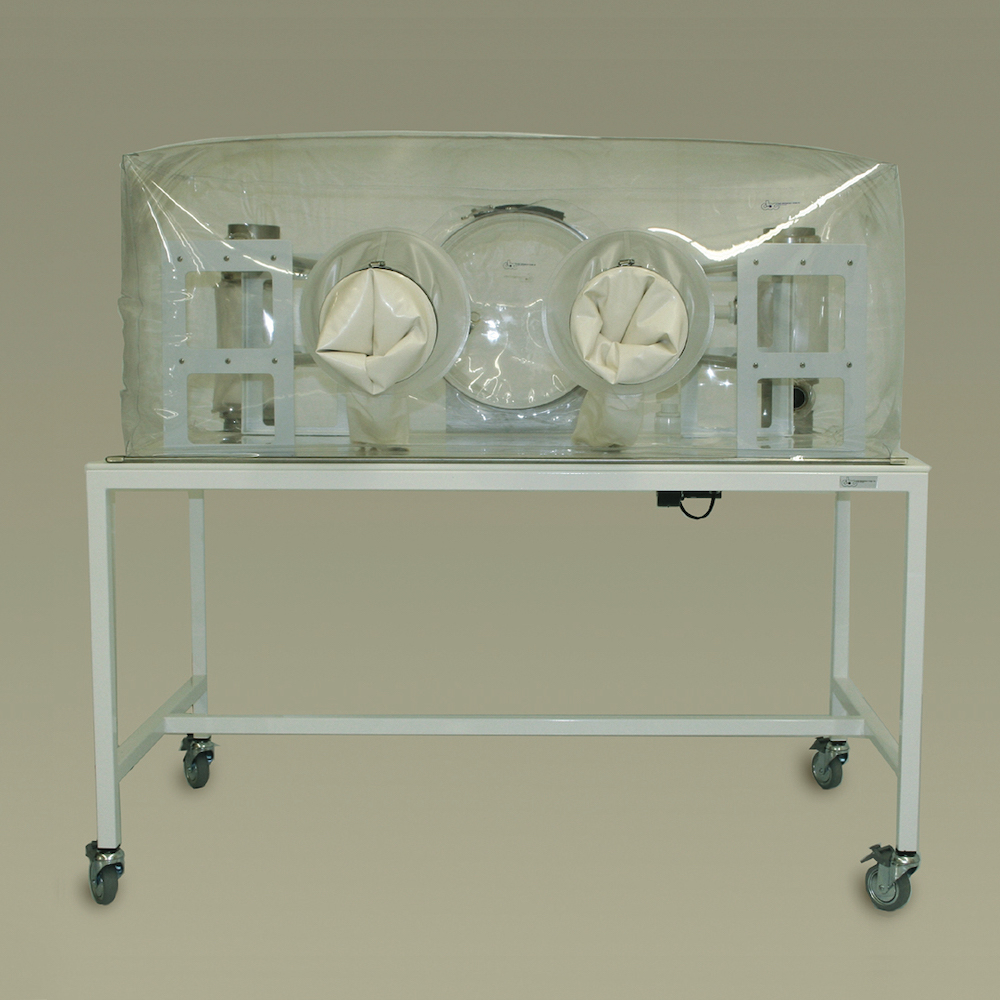
Single-Tier 5'x 2'x 2 Isolator
Flexible film (softwall) gnotobiotic rodent isolator systems. Note: many research labs find our 5'x 2'x 2 isolator systems to be ideal for breeding mice colonies.
Positive Pressure or Negative Pressure
Single-Tier IsolatorsSend Us a Message

Protecting Both Research and Researchers
Animal Research Gnotobiotic Isolators | Bio/Pharmaceutical Barrier & Containment Isolators
608.273.9661
●
810 Stewart Street, Madison, Wisconsin 53713
●
info@cbclean.com
© 2011-2022 Class Biologically Clean, Ltd. - Madison, Wisconsin - All rights reserved
® CBC is a Registered Trademark of Class Biologically Clean, Ltd.
